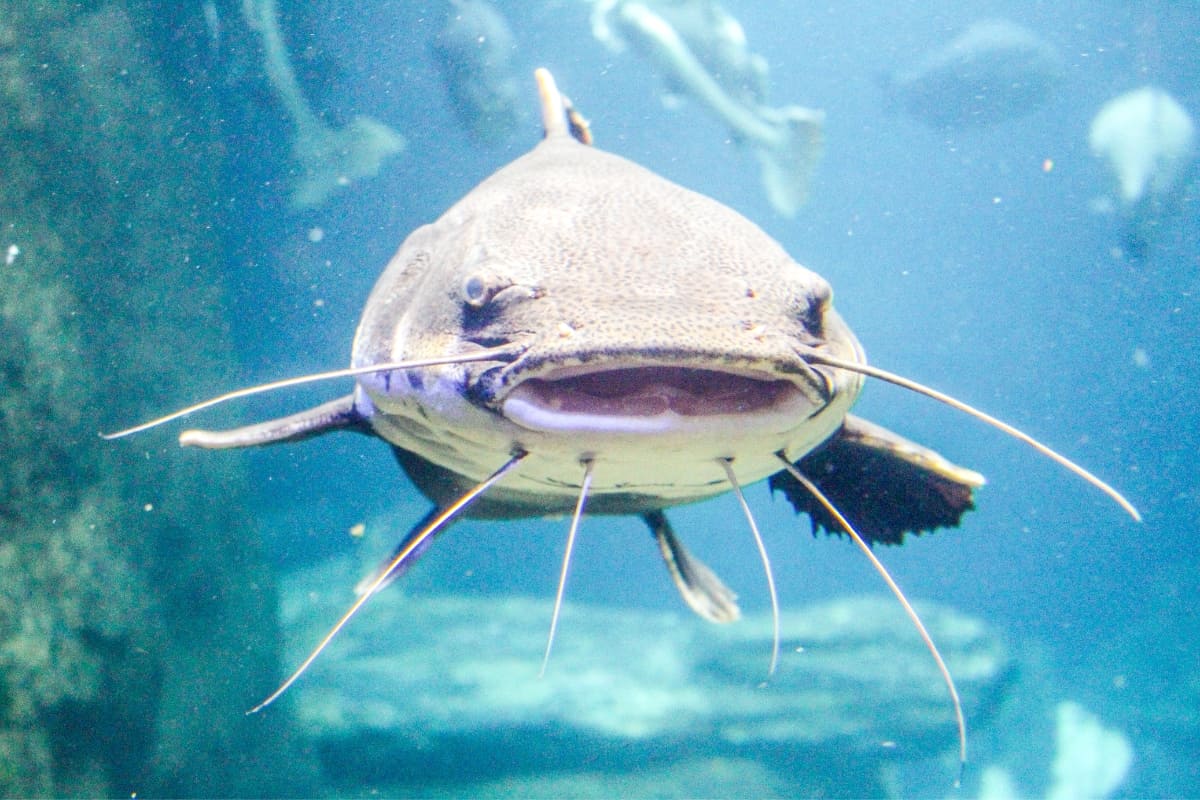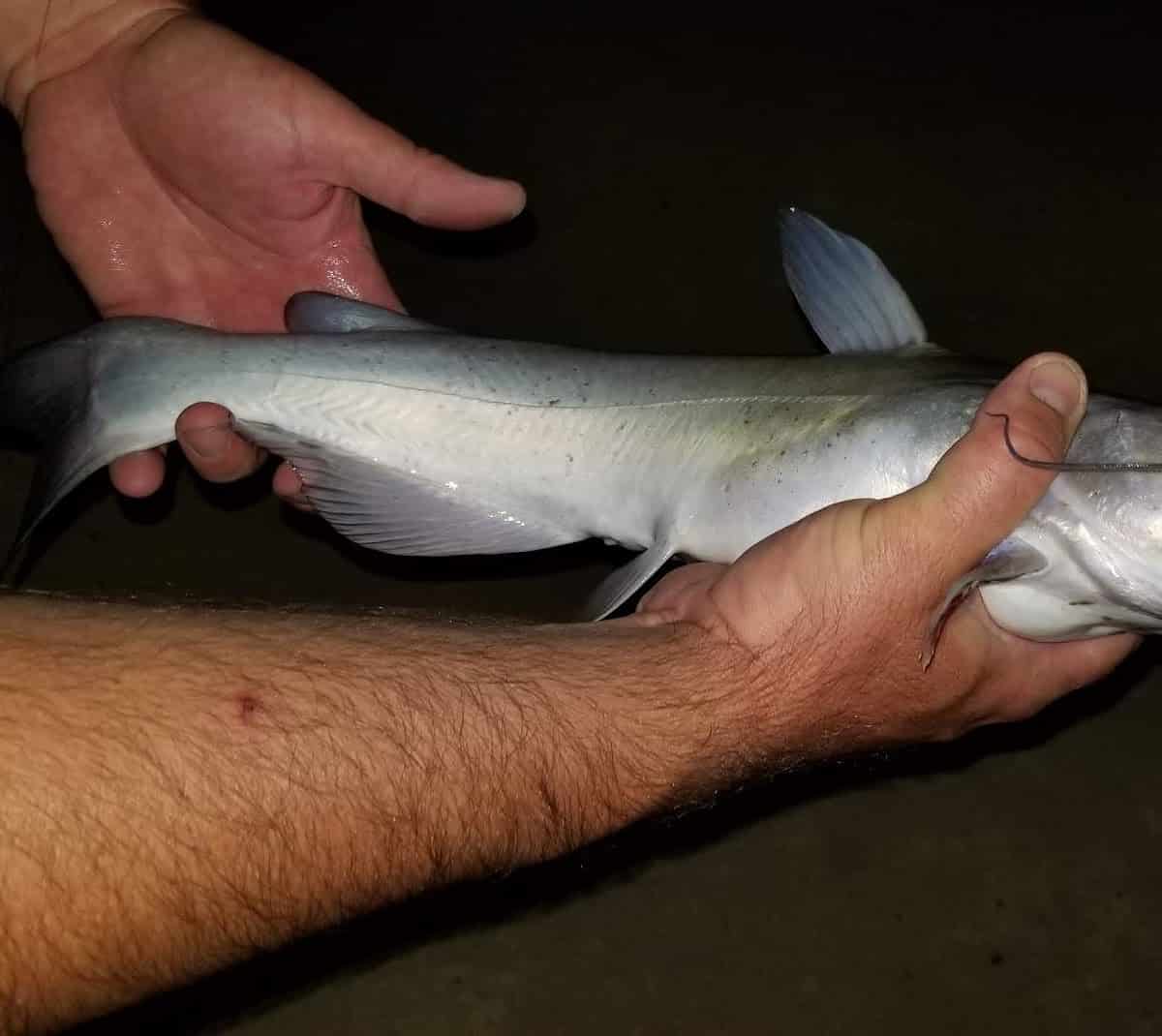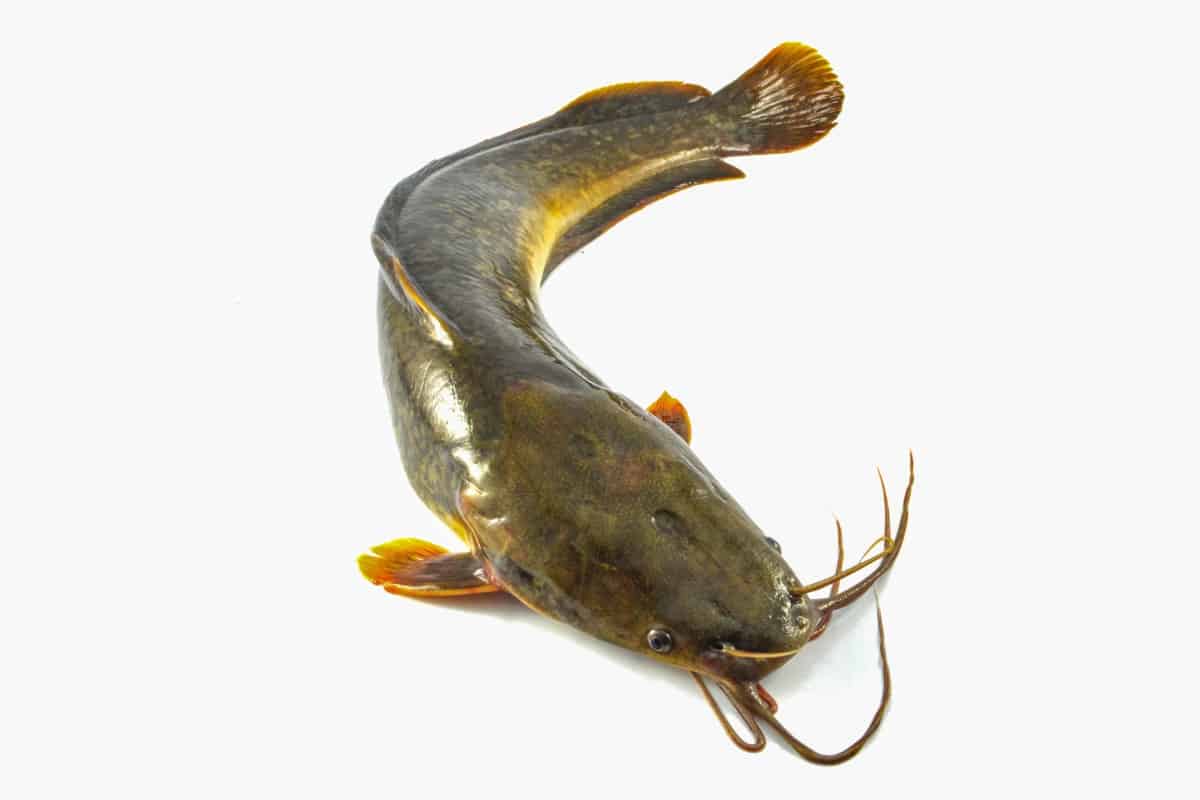Have you heard of pangasius?
This fish is a large shark catfish species that are native to the freshwaters of South and Southeast Asia. The term ‘pangasius’ is used commercially and it refers to what is colloquially known as basa, tra, or swai, a popular table fish.
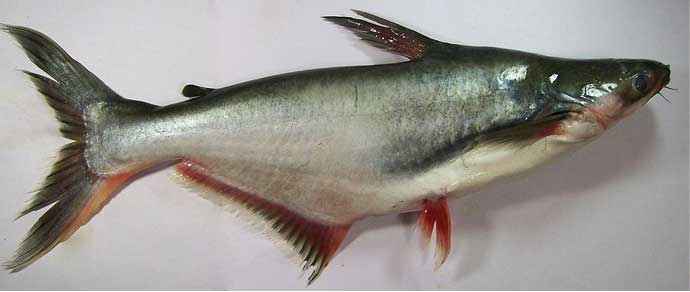
In this guide, we’ll talk about two different types of Pangasius. We’ll also show you how to catch the Giant Pangasius Catfish known as the Chao Praya giant catfish.
For more information about fishing in Bangkok, check out my guide here.
Overview
There are currently 22 recognized species of this fish in this genus. The body of the fish is generally stout and heavy and the head is rounded and broader than it is longer.
The snout is blunt and it has a white band on its muzzle. The species usually grows to about 12 cm in length (except the giant Mekong river catfish which can grow to about 300 cm in length) and it feeds on plants.
Also known as pangasius, panga, cobbler, and the river cobbler, the fish spawns before the flood season and the young are seen in June. Despite being a coveted table fish, several environmental organizations have raised concerns.
Farmed fish pollutes ecosystems and interferes with natural wild species.
Today, you’ll find there are pangasius farmers. Every year, pangasius farmers harvest twice because of the water temperature changes.
Pangasius Facts
| Scientific Name | Pangasius Bocourti (name is different according to species) |
| Common Name(s) | Pangasius, basa, swai |
| Family | Pangasiidae |
| Identifying Characteristics | The fish is stout and heavy and the head is rounded and broader than it is longer. The snout is blunt and it has a white band on its muzzle. |
| Depth Range | N/A |
| Habitat | This shark catfish species that is native to the freshwaters of South and Southeast Asia. |
| Limits | Check your local regulations |
| Largest Recorded | 9 feet long and 646 pounds (Giant Pangasius) |
Pangasius Habitat
Pangasius fish can be found in medium to large-sized freshwater rivers. They tend to inhabit deep pools but can also be found in rapids and riffles. They feed on shrimp, gastropods, and plants and are a type of catfish that eats other fish.
At the start of the flood season, basa usually migrates into floodplains to spawn. They’re raised and sold in captivity. They migrate from upstream refuges and spawning habitats. They then travel downstream to nursing and feeding habitats.
You might also find some farmed fish.
Read also: Can You Eat Shark Meat?
How to Catch Pangasius
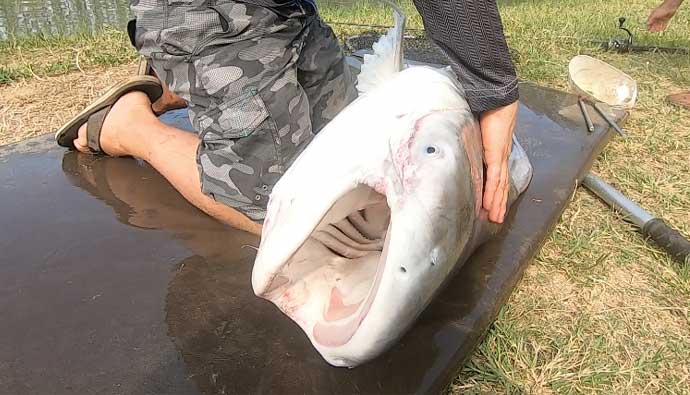
If you like catching big fish, then you need to test your strength against the massive Chao Phraya giant catfish.
Pangasius sanitwongsei are found in Thailand. Catching these cats is pretty straightforward, use a live baitfish with a hook in its tail to entice them to bite. I’ve actually had one bite a piece of banana on a hook…so I’m not sure how picky they are.
Make sure that about 14 inches of the leader run from the baitholder with a J-hook at the end. Attach a piece of bread to the hook under the surface of the bait ball.
Paroon Shark Fishing Tactics
- Use a simple slip sinker rig and small shrimp to catch wild river catfish. The fish’s main diet is crustaceans so you won’t have trouble attracting them with it.
- Pangassius catfish are easier to catch during the dry season in small lakes. The location you choose to fish in will dictate whether you should use doughballs, fresh dead bait, or shrimp. Ask the locals for help before experimenting.
Giant Pangasius Fishing Tips
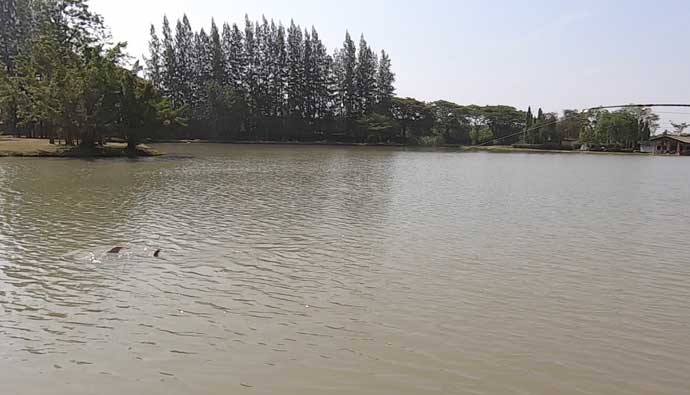
- These large paroon sharks fish like to hide in roots that are tangled under the water during midday for shade. A good idea is to start fishing after 5 pm when the sun is not on the water and the cats swim out in the open.
- Use a variety of lines for various water locations for different cats such as the Fireline and Trilene XT. Plus, use level-wind reels that can withstand a 30 to 80-pound test.
Chao Phraya in All Four Seasons
The lifecycle of this fish is dependent on the annual monsoon flood cycle and spawning. This usually takes place between May and June right at the beginning of the monsoon season.
During dry weather, the pangasius cat fish find shelter in deeper refuge areas. It spawns in rapids and sandbanks that include deep rocky channels and pools.
How to Clean Basa
Pangasius is a versatile fish. You can cook it in many ways. Here’s our favorite recipe. Contrary to what a lot of people believe, this fish is fit for human consumption.
NOTE: Please catch and release Giant Chao Phraya as they are on the critically endangered list.
- Lay the pangasius catfish flat on a cutting board but place it diagonally.
- Use a sharp knife and make a shallow cut along with the head but make sure you don’t remove it completely.
- Make a similar horizontal incision at the base of the tail and continue cutting along the spine, right till the head. You will have to make many passes with the knife and remove the loosened flesh as it comes off.
- When the fillet is hanging off the fish use the knife to cut it free by making sweeping passes underneath.
- Remove the fillet and trim it by cutting off the fins. Repeat the process on the other side to remove the second fillet.
How to Cook Swai
Finding this cheap fish in Asian markets is common. Here is a delicious recipe you can try with it:
Basa Recipe
- Preheat the oven to over 425°F.
- Mix ¼ cup of honey, 3 tablespoons of mayonnaise, 2 tablespoons of olive oil, and 1 tablespoon of lemon juice in a bowl.
- Place each panga fish fillet on separate aluminum foils on a baking dish.
- Drizzle the prepared sauce over both fillets and wrap them in the foil completely. Crimp at the top to seal the edges of the packets.
- Bake the fillets in the oven for about 13 minutes or till the fish flakes off with a fork.
- Top with the juices in the foil and serve.
Frequently Asked Questions
The fillets have a delicate texture and light taste which makes them excellent table fish.
The fish is a healthy choice for those who wish to lose weight and maintain their energy levels. It is a rich source of Omega 3 and protein.
Since pangasius or basa fish is a coveted and cheap table fish, it is bred in large numbers in catfish farms to fulfill demand.
A 10kg female can lay over one million eggs during the spawning season. Wild broodstocks spawn twice a year but certain species in Vietnam have been known to spawn 6 to 17 weeks after the first one.
This freshwater catfish can be found in the Mekong, and Chaopraya rivers as well as the Mekong basins in Cambodia, Vietnam, and Thailand.
Some reports suggest that the flesh of the pangasius fish can be toxic. Rejected fish may have high levels of antibiotics and preservatives, so make sure you buy from a reliable supplier.
Insider Advice
While fishing information about this catfish is scarce, you can still find it in farms and fisheries that breed it for the market. The eggs and milt of pangasius are mixed to help reproduction and thus increase their numbers to meet high demands.
If you have ever caught this fish, do share your experience and the rigs you used in the comments below and share this article if you liked it.




 Facebook
Facebook YouTube
YouTube


